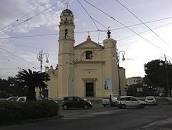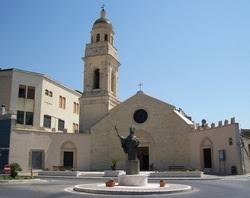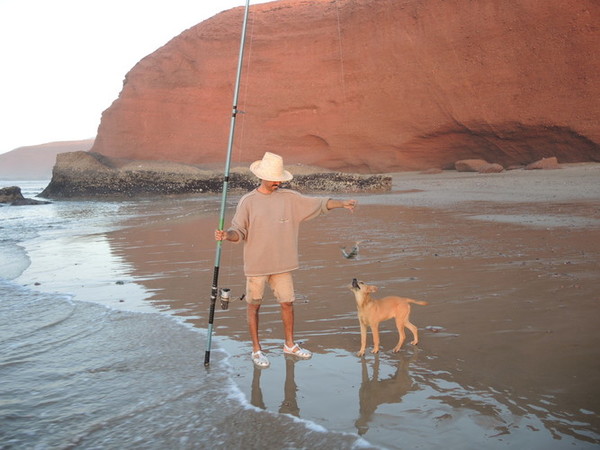Bastion of Saint Remy
It is one of the most important fortifications of Cagliari. It was built at the end of the nineteenth century on the ancient city walls, to link the three southern bastions together in order to join the Castello district. The building is built in neoclassical style, with Corinthian columns, using the Pietra Forte, a white and yellow limestone. At the end of the nineteenth century it was monumentally transformed into a staircase, surmounted by the Arc de Triomphe, which gives access to a covered promenade and a large panoramic terrace. During the Second World War it was used as a refuge for those who were forced to leave their homes destroyed by bombs.

Cathedral of St. Mary
The church is a combination of different artistic styles and contains seven centuries of historical memories of the city. In the seventeenth and eighteenth centuries it was renovated in Baroque style. It was probably founded in 1217 and was in Romanesque form, divided into three naves by cross vaulted columns and a wooden roof. The cathedral remained for about twenty years without a facade, only in 1933 was the current Neo-Romanesque façade built in the Pisan style. In 1999 a restoration of the dome, the roof and the bell tower was carried out.

Sanctuary of Bonaria
The sanctuary is the oldest part of the complex and was the first example of Gothic-Catalan architecture in Sardinia. The building dates back to 1704. During the second world war the building suffered serious damage due to the bombing but then it was restructured. The facade is very simple, a hut. The interior is in Gothic-Catalan style, with a single nave and ogival vault. The facade of the basilica is presented in a simple neoclassical style.

Elephant tower
It is one of the most important monuments of the city. The tower was built in 1307, and was also used as a prison where the heads of the beheaded or condemned prisoners were attached to its doors. The main purpose was defense. The three outer sides were built with strong stone, while the fourth side with four floors has wooden lofts. High up on a shelf a little elephant's statue sticks out because it was one of the symbols used by Pisa.

Castle of St. Michele
It has a quadrangular shape with three corner towers and is surrounded by a moat dug into the rock. On the eastern side there are two mighty square towers. Some works have brought to light ancient remains that suggest a church dating back to that period with two naves. The structure, however, was abandoned and used as a lazaret during the plague, then used as a defensive fortress by the French attacks until it became the property of the country.

St. Pancrazio tower
It is the highest tower in Cagliari. The tower was built in 1305, it was damaged many times due to the bombardment of the wars and and one side was thus closed. It was also used as a prison. Like the twin tower of the Elephant, it is made of Pietra Forte.

Royal palace
It was the residence of the king during the Aragonese, Spanish domination. It has fourteenth-century origins and was the seat of the king from 1307. It underwent several changes in the eighteenth century. The palace was also the official residence of the royal family and of the court, occupied by Napoleon. Inside there are remarkable frescoes representing scenes from the history of Cagliari. The interior is all very colorful and decorated with frescoes.

Roman amphitheater
It was built in the 1st and 2nd centuries under Roman domination. The struggles over time began to lose importance and so it was closed until the Middle Ages where it was used as a quarry by the conquerors. It is half dug into the rock while the remainder was white limestone. It hosted animal fights, including gladiators, but capital punishments were also performed in front of the cheering crowd.

Monumental cemetery in Bonaria
It was built in 1829. In the center is the chapel, in neoclassical style, and around the space intended for the burial of children. It contains numerous artistic testimonies and the tombs of important personalities. To the right of the entrance there are several chapels and monuments immersed in vegetation. Among the many is the monument to Francesca Warzee, made up of a child while he raises the blanket that covers his mother as if he wanted to kiss her face. Interesting is the Birocchi chapel, whose ceiling is adorned with clouds and angels, the wall is covered by a curtain moved by an angel who has his hands over his mouth as if he meant to be silent. The upper part of the cemetery hosts several rows of niches and ossuaries.

Viper cave
It is a Roman burial undergtound. It was built by the Roman Lucio Cassio Filippo in honor of his wife, the matron Atilia. Based on the Latin and Greek inscriptions we can reconstruct the story between the two. The pediment is decorated with flowered spirals and two snakes can be seen, from which derives the name of the cave. Access to the Vipera cave is permitted to the public, only from the outside.

Basilica of St. Elena
It is dedicated to Sant'Elena Imperatrice patroness of the city and is located in the historic center. The first church was built in Romanesque style but was destroyed between 400 and 500 century and then rebuilt. It was larger and in Gothic style. In 1775 it was destroyed by a fire and so it was rebuilt. In 1818 the works ended and was blessed. It is all in neoclassical style. The interior is a Latin cross with barrel vaults divided by round arches. The central nave has a baroque style decorated with flowers, fruit festoons, branches and images of st. Elena. It has numerous frescoes.

Church of St. Ambrogio
The construction dates back to the second half of the sixteenth century. The bell tower rises to the left of the façade. The portal has rounded arches framed by small columns. The interior has a single nave with a barrel vault. The presbytery instead has the original star-shaped vault, with sculpted pendulous gems.

What to see in Umbria?
Monuments, restaurants and local foods
How to enjoy Clermont-Ferrand
Clermont-Ferrnad, located in Auvergne a green and peaceful region, is the perfect place if you want to discover France in an unusual way.
Morocco by car
Morocco by car. The full itinerary of a car trip in Morocco.
Road trip: 15 days accross Europe
Go through 4 different countries and visit new places, cultures and ways of life in a 12 days road trip accross Europe.
















